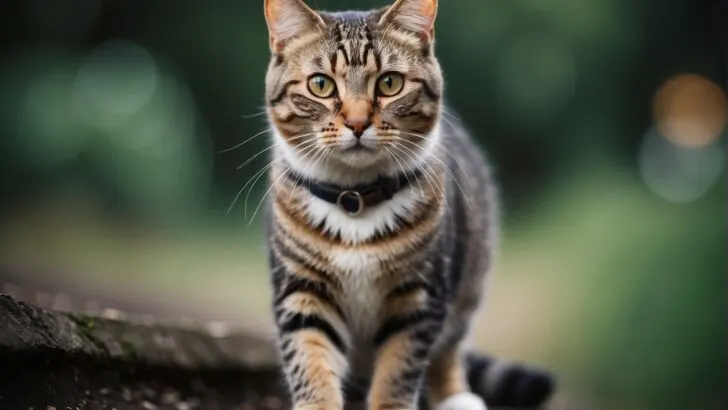Cats typically limp for a varying period after declawing, often depending on individual healing rates and the specifics of the surgery. Some cats may limp as little as 1 week, while others may go as long as 6 weeks to several years later; a clear indication of complications from the procedure.
If you’ve had to make the tough decision to declaw your feline friend, which is formally known as onychectomy, it’s important to know that this procedure involves the amputation of the last bone of each toe on the front paws.
Imagine how it might feel if the tips of your fingers were removed; your cat experiences something similar, and that’s why they need ample time to recover.

During recovery, it’s critical to keep a close eye on your pet to manage any potential pain or complications. You might have seen cats in their post-surgical state attempting to go about their regular activities, only to be hindered by tenderness in their paws.
This can lead to a temporary limp, which underscores the importance of a comfortable and quiet space for them to heal. Every cat is unique, and while some may only limp for a few days, others may take weeks to fully regain their confident stride.
In your role as a caregiver, your support and attention can make a significant difference in your cat’s recovery process. Setting up a cozy nook with easy access to food, water, and a litter box with soft filling can ease their discomfort. Patience is key, as some cats may become less active or express changes in behavior as they adjust to their new normal.
Limping and Recovery Timeline

After your cat undergoes declawing surgery, understanding the expected limping and recovery timeline is key to helping them comfortably heal.
Initial Limping and Healing
In the immediate aftermath of declawing, it’s normal to see your cat limping as they recover from the procedure. The first few days are critical for healing, and it’s during this time that proper care is essential. Your cat will likely have bandages on their paws, which help to protect the incisions.
Pain medications are vital at this stage to manage their discomfort and should be given as prescribed by your veterinarian. Recovery time can vary; most cats start to regain their normal mobility within 1-2 weeks, but this may extend depending on individual healing processes and the presence of complications like infection or improper incision healing.
Long-Term Consequences
As a concerned cat owner, it’s essential to be aware of the potential long-term effects of declawing. Some cats may experience chronic pain, arthritis, or nerve damage following the surgery. Limping can also be a sign of phantom pain, where a cat feels pain despite the amputation of the claws.
These conditions may not only affect your cat’s physical health but also lead to behavioral changes due to the associated discomfort. To aid in ensuring a high quality of life post-surgery, closely monitor your cat’s behavior and comfort level, and follow up with your vet if you notice any persistent signs of distress or limping.
Alternatives and Prevention
Providing your cat with alternatives to declawing can help prevent damage to household items while still honoring your feline’s natural behaviors. Focus on non-surgical options and encourage scratching where it’s appropriate.
Non-Surgical Alternatives
Nail Caps: An excellent option to consider is adhesive nail caps such as Soft Paws. They’re small, soft sheaths that fit over your cat’s claws, preventing damage when scratching. These need to be replaced every 4-6 weeks and can be a humane alternative to surgical declawing.
Scratching Posts and Items: Invest in a variety of scratching posts and items. A tall, sturdy cat tree allows your feline friend to stretch and scratch. Offer different materials like carpet, sisal, or cardboard, as cats have personal preferences. Position these items near where your cat commonly scratches.
Promoting Natural Behaviors
Training: Encouraging proper scratching behavior from an early age can prevent unwanted scratching. Use treats and affection to reward your cat for using scratching posts and other acceptable scratching items. Double-sided tape can help deter them from unwanted areas.
Behavioral Changes: Your cat needs to act on their instincts, so provide ample opportunities for scratching, climbing, and playing. Behavioral changes such as increased biting can occur if a cat’s natural tendencies are not allowed, so aim to make their environment as enriching as possible.

My name is James, and welcome to FAQCats!
Along with our team of cat owners, expert pet enthusiasts, and pet professionals, we aim to write engaging helpful, engaging content about cats. At FAQCats we strive to provide content that’s accurate and fun to read. Our team writes about everything related to cats; even the most complex of topics. Through extensive research and caring for our own fur-pals, we’re able to provide something cat owners worldwide will love. Have a look around, and leave us feedback anytime!

